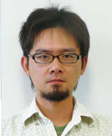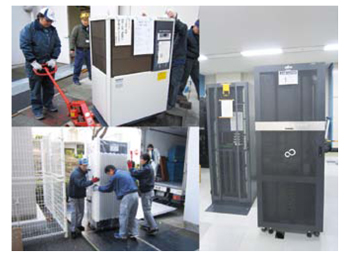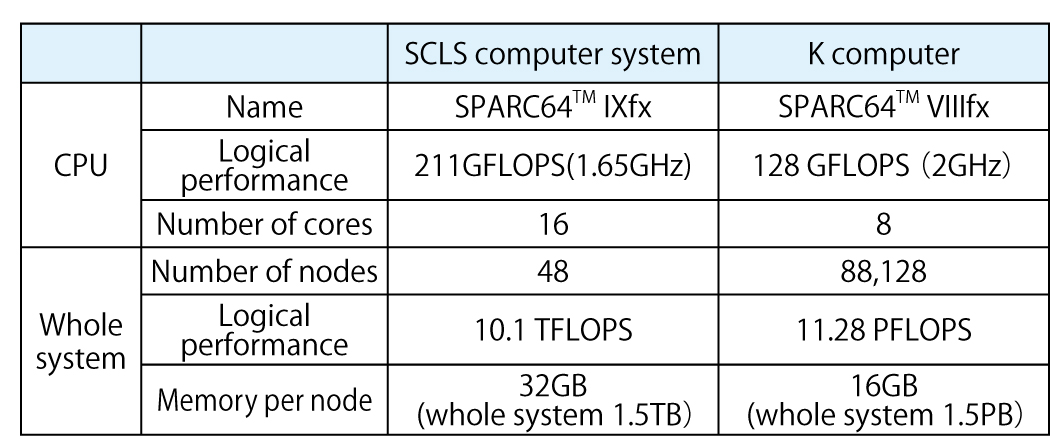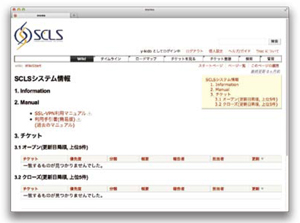
“K Computer” Compatible Computer:
Installation of SCLS Computer System

HPCI Program for Computational Life Sciences, RIKEN
Yoshiyuki Kido
Background and Mission
The HPCI innovative research field 1 is proceeding with research activities using supercomputers that are centered on the “K computer”, while taking responsibility for the establishment of the research systems for computational science such as the dissemination of research findings, cultivating human resources, and creation of human networks. In that effort, we have decided to install a SCLS computer system which is compatible with the “K computer”. Fig. 1 shows the field site for SCLS computer system installation. The purpose of this system is as follows:
- To promote the use of supercomputers such as the “K Computer” in life science research
- To provide a test bed environment for research findings from innovative research field 1 and the ISLiM project
- To create a community for developers and users of the “K computer”, and “K computer compatible computers”.
Therefore, we are widely calling for participation of life scientists to use the SCLS computer system [1]. The specifications of the SCLS computer system which is to be installed are given in Table 1. The specifications of the “K computer” are also provided as a reference for comparison.
 |
Fig. 1 : SCLS computer system installation field site |
Promoting the Use of Supercomputers such as the “K Computer” in Life Science Research
In the field of drug discovery, virtual screening and docking simulations are performed using computers to narrow down candidate compounds for improving efficiency. Furthermore, it is becoming realistic to perform precise molecular dynamic simulations through calculations of intermolecular free bonding energy. To execute precise molecular dynamic simulations, the calculation load rises exponentially when factors increase, and the calculation time would be unrealistic without the use of supercomputers. However, it is difficult for small and medium-sized enterprises and research institutions to introduce supercomputers because they are highly expensive. Therefore, we have developed the SCLS computer system as a super computing environment that can be used casually on a small scale for life scientists. We have prepared an open application system for using the SCLS computer system, and programs that qualify and pass the open application may use the SCLS computer system free of charge. Although the number of nodes of the SCLS computer system is small, it is compatible with the "K computer", and we hope the know-how attained through the programs on the SCLS computer system will lead to applications for using HPCI centered on the "K computer".
Providing a Test Bed Environment for Research Findings
In innovative research field 1 and the ISLiM project, applications that run on super parallel computer machines such as the “K computer” are also being developed. As a means for disseminating research findings, the SCLS computer system will be developed as a test bed environment and will promote the usage of these applications. Applications developed in the ISLiM project range widely over six categories, resulting in development of a total of 31 applications [2]. These applications will be installed on the SCLS computer system, and the SCLS computer system will be available as an environment for their use and evaluation.
Creation of a Developer and User Community
Many applications that run on the “K computer” and “K compatible computers” are developed by large projects, and maintenance of these applications will be difficult once the project ends. Such a situation would be a large loss, therefore we aim to grow a developer community to allow continuous maintenance of the applications running on the “K computer” and “K compatible computers”. While providing computational resources, the SCLS computer system will also provide a developer community with the opportunity for lively discussions. Specifically, a Web-based system for developers to freely read and write (see Fig. 2), and a mailing list, will be provided. It is planned to operate the Web-based system as a place to contain various information such as system troubleshooting and knowhow for parallel development, and a system operation engineer will be included in the editorial staff.
Conclusion and Future Challenges
Life science, medical care, and drug discovery involve massive data and computational load that cannot be processed by humans. However, with the progress of computers, this problem can be solved. In other words, you can say that computers are absolutely necessary in the field of life sciences. The “K computer” has taken first place on the 37th a nd t he 3 8th TOP500 l ist in 2011[3], and remains a top class computer in the world. In order to use the “K computer,” it is necessary to provide supercomputer use records such as application scalability, which requires knowledge of supercomputers. It is too difficult for life scientists who do not have this expertise to use large scale computers like the “K computer”. Therefore, we believe it is necessary to provide a supercomputer which is small-scale and can be used with ease by such life scientists. We hope that the SCLS computer system will become a catalyst in promoting the use of supercomputers.
[References]
[1] HPCI Innovative Research Field 1, http://www.kobe.riken.jp/stpr1-life/en/
[2] Next-Generation Integrated Simulation of Living Matter, http://www.csrp.riken.jp/index_e.html
[3] TOP 500, http://www.top500.org
 |
Table 1 : Comparison of SCLS computer system and K computer specifications |
 |
Fig. 2 : SCLS computer system portal site under test operation (Our English portal site will be constructed in the near future.) |
BioSupercomputing Newsletter Vol.8
- SPECIAL INTERVIEW
- Grand Challenge opens the way to the future of life science through innovative approach
Program Director, Computational Science Research Program, RIKEN
Koji Kaya - A Landmark Project that Brought on an Innovation in the Field of Life Scienc
Deputy-Program Director, Computational Science Research Program, RIKEN
Ryutaro Himeno
- Report on Research
- Multi-scale, multi-physics heart simulator UT-Hear
Graduate School of Frontier Sciences, the University of Tokyo
Toshiaki Hisada, Seiryo Sugiura, Takumi Washio,
Jun-ichi Okada, Akihito Takahashi
(Organ and Body Scale WG) - Simulation Model for Insulin Granule Kinetics in Pancreatic Beta Cells
Graduate School of System Informatics, Kobe University
Hisashi Tamaki(Cell Scale WG) - The road to brain-scale simulations on K
Brain Science Institute, RIKEN, Institute of
Neuroscience and Medicine (INM-6),
Juelich Research Center
Medical Faculty, RWTH Aachen University Markus Diesmann
(Brain and Neural Systems WG) - MD Core Program Development for Large-scale Parallelization
Computational Science Research Program, RIKEN
Yousuke Ohno(High-performance Computing Team)
- SPECIAL INTERVIEW
- Aiming to realize hierarchical integrated simulation in the circulatory organ system
and the musculoskeletal / cerebral nervous systems
Professor, Department of Mechanical Engineering and Department of Bioengineering The University of Tokyo
Shu Takagi(Theme3 GL) - Leading-edge large-scale sequence data analysis with K computer in order to promote the understanding of life programs and their diversity
Professor, Human Genome Center, The Institute of Medical Science, The University of Tokyo
Satoru Miyano(Theme4 GL)
- Report
- 4th Biosupercomputing Symposium Report
Computational Science Research Program, RIKEN
Eietsu Tamura - “K Computer” Compatible Computer: Installation of SCLS Computer System
HPCI Program for Computational Life Sciences, RIKEN
Yoshiyuki Kido
